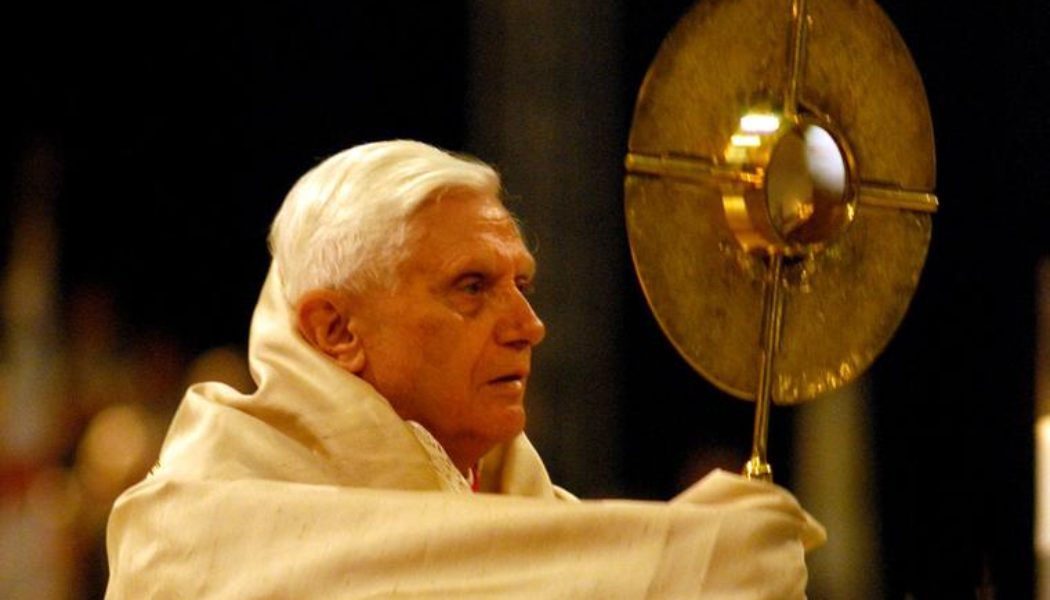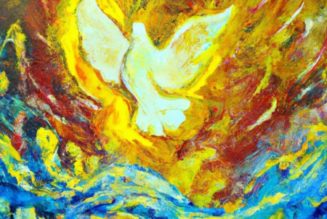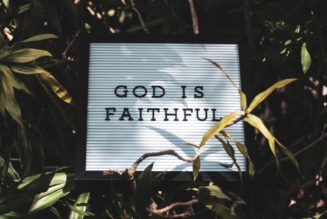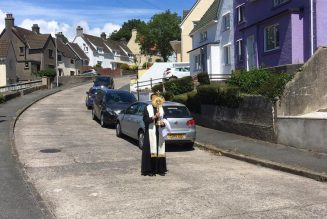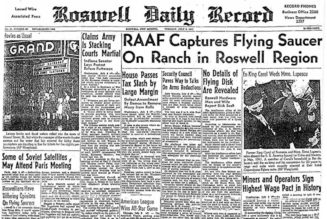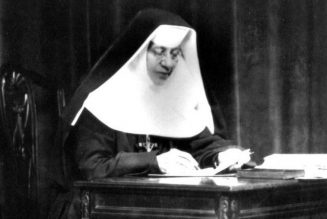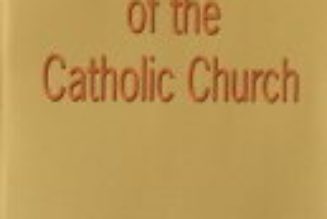
COMMENTARY: The death and funeral observances also offered rather remarkable symmetries that echoed aspects of Benedict’s life.
The death of Pope Emeritus Benedict XVI on the last day of year, just after Christmas, on the feast of St. Sylvester, was suggestive of a life shaped by the sacred liturgy, given his birth on Holy Saturday.
The death and funeral observances also offered rather remarkable symmetries that echoed aspects of Benedict’s life. There are four of them that bear noting.
Octave Deaths
Pope Benedict’s first words on the balcony of St. Peter’s after his election were, “After the great Pope John Paul …” He understood himself in relation to “John Paul the Great,” to use the appellation of Pope Francis. The papacy had been entrusted to him after his history-shaping predecessor; their partnership would continue after John Paul’s death.
John Paul died on the seventh day of the Octave of Easter, the vigil of Divine Mercy Sunday. (It was also a First Saturday, a Marian day, and thus a liturgical coincidence exceedingly rare.)
Benedict died on the seventh day of the Octave of Christmas, the vigil of the solemn Solemnity of Mary, Mother of God.
That the two partners would have symmetrical deaths is fitting, John Paul taking the greater (Easter) and Benedict taking a secondary but also solemn role (Christmas). An Easter pope followed by a Christmas pope — Christmas was Benedict’s favorite time of year.
Vigil of Epiphany
Soon after Benedict’s election, he went to Cologne for World Youth Day 2005. The Cologne cathedral is noted for housing the relics of the Magi; hence, WYD 2005 took as its theme, “We Have Come to Worship Him” (Matthew 2:2).
Benedict made one significant change to John Paul’s WYD program: the addition of Eucharistic adoration to the evening vigil. The immense silence of the enormous crowd before the Blessed Sacrament was one of the most powerful images of Benedict’s pontificate.
The day after Benedict’s funeral was the Epiphany, and Pope Francis added some off-the-cuff remarks to his prepared homily, perhaps thinking about Benedict and adoration. The Holy Father noted that too often we come to prayer with a list of requests and forget that adoration of God comes first.
“Everything starts and ends there,” Pope Francis said, “because the purpose of everything is not to achieve a personal goal or to receive glory for ourselves, but to encounter God.”
First Homily and Burial Text
A formal document called the rogito (a legal “deed”) is placed in the coffin of a dead pope, a brief summary of his life and pontificate. The one for Benedict XVI begins:
“In the light of Christ risen from the dead, on 31 December in the year of Our Lord 2022, at 9.34 a.m., as the year came to an end and we were ready to sing the Te Deum for the many benefits granted by the Lord, the beloved Pastor emeritus of the Church, Benedict XVI, departed from this world for the Father. The whole Church together with the Holy Father Francis accompanied Pope Benedict’s transitus with prayers.”
By tradition, the pope leads the Church’s hymn of thanksgiving, the Te Deum, on New Year’s Eve. In fact, Pope Francis did so just hours after Benedict XVI had died and made his first public comments upon his death.
That provided a certain symmetry with the beginning of Benedict’s pontificate. In his first homily as pope, the day after his election, during a Mass with the cardinals in the Sistine Chapel, Benedict quoted that very hymn:
“I undertake this special ministry, the Petrine ministry at the service of the universal Church, with humble abandonment to the hands of the providence of God. And it is to Christ in the first place that I renew my total and trustworthy adhesion: In Te, Domine, speravi; non confundar in aeternum!”
“In You, Lord, we have hoped; and we shall never hope in vain!”
A Shared Tomb
A final symmetry is that Benedict’s coffin was laid in the same tomb where John Paul lay before his beatification. (After being declared “Blessed,” he was moved upstairs into St. Peter’s Basilica.)
That tomb had previously held Pope John XXIII. As a young priest, Joseph Ratzinger drafted an important address for Cardinal Josef Frings, delivered in Genoa in preparation for the Second Vatican Council. Pope John XXIII summoned Cardinal Frings to Rome to tell him that it captured exactly his hopes for the upcoming Council. After Vatican II, it would fall to John Paul II to give the Council its authentic interpretation, a task to which Benedict also contributed.
Lying in the same grave as Sts. John XXIII and John Paul II — canonized on the same day in 2014 — is a fitting resting place for Ratzinger/Benedict, whose whole life was shaped by, and in turn shaped, Vatican II.
